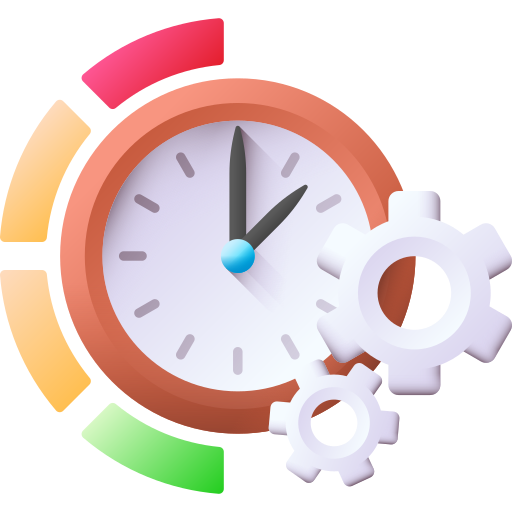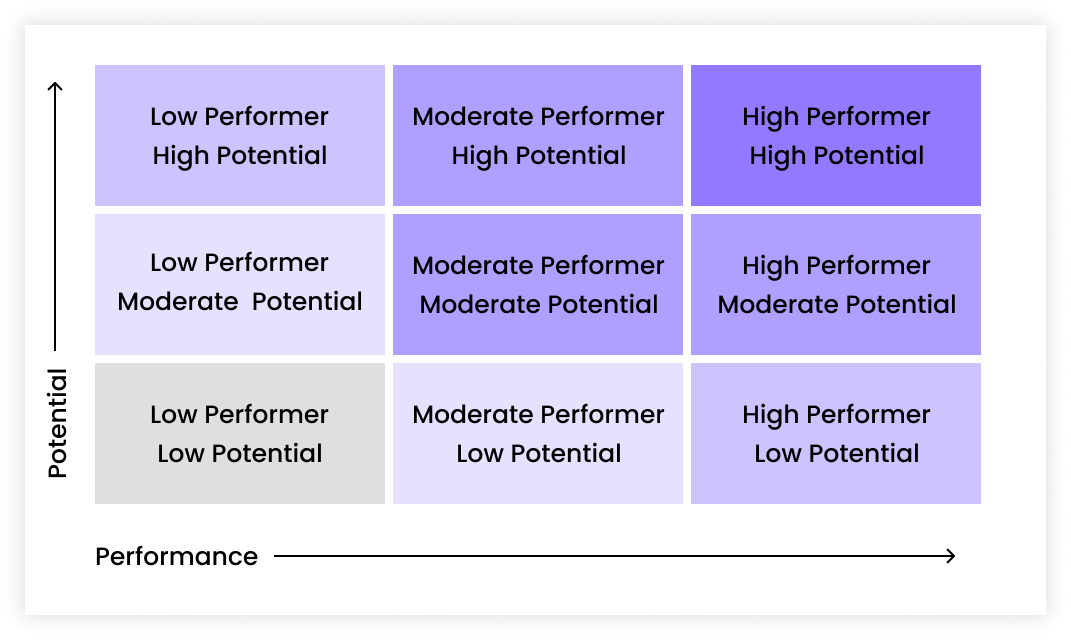
Introduction to Employee Performance Measurement
Employee performance measurement is the systematic evaluation of an individual employee’s job-related performance and productivity, primarily based on predetermined criteria and organizational objectives. Understanding and implementing effective employee performance measurement is vital as it not only reflects the contributions of each employee to the company’s success but also guides their professional development and motivation.
In this blog, we delve into the core elements that define effective performance measurement, exploring various key metrics and methods used by organizations globally. Let’s dive in and explore the multifaceted world of employee performance measurement.
What is Performance Measurement Systems?
Performance measurement is the process of gathering, evaluating, and communicating data about the performance of an individual, team, organization, or system. Performance measurement systems are integral to the success and growth of any organization. They help businesses track progress, identify areas for improvement, and ensure alignment with strategic objectives.
Setting Objectives and Goals
Setting clear and achievable goals is the foundation of any effective performance measurement system. Goals should be specific, measurable, attainable, relevant, and time-bound (SMART). When aligning goals with business objectives, it’s essential to consider the following:

Strategic Alignment
Ensure that individual and team goals align with the broader strategic objectives of the organization. This ensures that efforts are directed towards the most impactful activities.

Stakeholder Involvement
Involve key stakeholders, including employees, managers, and executives, in the goal-setting process. This fosters commitment to achieving the set objectives.

Regular Review
Goals should not be set in stone. Regularly review and adjust goals as needed based on changing business conditions, market dynamics, and organizational priorities.
Technological Investment for Performance Tracking
In today’s digital age, leveraging modern tools and technologies like employee monitoring software for performance tracking is crucial for accuracy, efficiency, and real-time insights. Here’s how organizations can benefit from technological investments:

Automated Data Collection
Implement automated systems to collect and analyze performance data, reducing manual errors and saving valuable time.

Real-time Reporting
Utilize dashboards and analytics tools to provide real-time insights into performance metrics, enabling timely decision-making and course corrections.

Integration Capabilities
Invest in integrated platforms that can seamlessly connect with other business systems, such as CRM, ERP, and HRM, to provide a holistic view of organizational performance.
Maintaining Transparency and Alignment with Company Culture
For implementing a performance measurement system, Transparency and alignment with company culture are crucial. Here’s how organizations can foster transparency and ensure alignment:

Clear Communication
Communicate the purpose, process, and benefits of the performance measurement system to all employees. This helps in building trust and fostering a culture of transparency.

Employee Training and Development
Provide training and development opportunities to equip employees with the necessary skills and knowledge to understand and participate in the performance measurement process effectively.

Incorporate Organizational Values
Ensure that performance metrics and goals reflect and reinforce the company’s values and culture. This ensures alignment and motivates employees to contribute towards the organization’s success.
Key Performance Metrics
Effective performance measurement systems rely on a robust set of key performance metrics that provide insights into various aspects of employee performance. These metrics not only help in evaluating individual and team contributions but also aid in identifying areas for improvement and development. Let’s explore the key performance metrics and how they contribute to performance assessment.
Productivity Metrics
What is it?
Productivity metrics focus on quantifying the output of work relative to the input of resources. This can include metrics related to sales, process efficiency, and customer experience.
How it helps in performance measurement

Sales Metrics : Tracking sales performance provides insights into an employee’s ability to generate revenue and meet targets, which is crucial for roles in sales and business development.

Process Metrics : Measuring process efficiency helps in identifying bottlenecks, streamlining workflows, and improving overall productivity across different job functions.

Customer Experience Metrics : Evaluating customer satisfaction and loyalty metrics helps in assessing how effectively employees are delivering value to customers, which is vital for roles in customer service and support.
Quality of Work
What is it?
Quality of work refers to the standard and accuracy of work performed by an employee. Customized measures based on job functions are used to evaluate this metric.
How it helps in performance measurement

Customized Measures : Tailoring quality metrics based on job functions ensures that employees are evaluated based on the specific requirements and standards of their roles.

Continuous Improvement : Monitoring the quality of work helps in identifying areas for improvement, implementing corrective actions, and maintaining high standards of performance across the organization.
Employee Growth and Development
What is it?
Employee growth and development metrics focus on tracking training participation, skills acquisition, and professional development opportunities.
How it helps in performance measurement

Training : Monitoring participation in training programs helps in assessing employees’ willingness to learn and adapt to new skills and technologies.

Skills Acquisition : Tracking the acquisition and application of new skills provides insights into employees’ professional growth and their ability to contribute to organizational success.

Professional Development : Evaluating opportunities for career advancement and growth helps in fostering a culture of continuous learning and development, which is essential for employee engagement and retention.
Employee Engagement
What is it?
Employee engagement metrics measure the level of commitment, involvement, and enthusiasm employees have towards their work and the organization.
How it helps in performance measurement

Measuring Commitment : Assessing employee engagement helps in understanding the level of commitment employees have towards achieving organizational goals and objectives.

Enhancing Productivity : Engaged employees are more likely to be productive, innovative, and customer-focused, leading to improved performance and business results.
Read more: Discover how time management becomes the best system for productivity
Learning and Development Performance
What is it?
Learning and development performance metrics focus on tracking enrolment rates in learning initiatives and the application of new skills acquired through training programs.
How it helps in performance measurement

Enrolment Rates : Monitoring enrolment rates in learning initiatives helps in evaluating employees’ willingness to participate in training and development opportunities.

Application of New Skills : Assessing the application of new skills learned through training programs provides insights into the effectiveness of learning initiatives and their impact on employee performance and organizational success.
These are the key performance metrics that play a pivotal role in employee performance measurement. By leveraging these metrics effectively, organizations can make informed decisions, drive performance improvements, and foster a culture of continuous learning, growth, and excellence.
Advanced Performance Evaluation Methods
As organizations continue to evolve, so do the methods and techniques used for evaluating employee performance. Traditional performance evaluation methods are giving way to more advanced and holistic approaches that provide a comprehensive view of an employee’s capabilities, contributions, and potential. In this section, we delve into advanced performance evaluation methods, highlighting their significance in employee performance measurement.
360-Degree Feedback
360-Degree Feedback, multi rater, or multi source feedback is an employee evaluation method that gathers insights about an employee’s performance from various sources, including peers, managers, subordinates, and even self-evaluation.
How it helps in performance measurement

360-Degree Feedback provides a well-rounded view of an employee’s strengths, weaknesses, and areas for improvement, offering a more comprehensive and balanced assessment of performance.

By collecting feedback from multiple perspectives, organizations can identify blind spots, uncover hidden talents, and address potential issues that may not be apparent through traditional evaluation methods.
Behaviorally Anchored Rating Scale (BARS)
The Behaviorally Anchored Rating Scale (BARS) method links performance ratings to specific behavioral examples, usually on a 5, 7, or 9 scale. This provides a more objective and behavior focused approach to performance evaluation.
How it helps in performance measurement

BARS eliminates the uncertainty by linking performance ratings to observable & measurable behavioral examples, ensuring a more objective & consistent evaluation process.

By focusing on behaviors rather than traits or personalities, BARS encourages constructive feedback, fostering continuous improvement and development.
Net Promoter Score (NPS)
Net Promoter Score (NPS) is a measure used to gauge customer loyalty, satisfaction, and enthusiasm with a company that’s calculated by asking customers one question: “On a scale from 0 to 10, how likely are you to recommend this product/company to a friend or colleague?”
How it helps in performance measurement

NPS measures the likelihood of employees recommending their organization as a great place to work, serving as an indicator of employee satisfaction, loyalty, and engagement.
9-Box Grid Method
The 9 box grid is an employee assessment tool that divides and plots employees across 9 key data points. It is a grid-based system used to evaluate employees’ performance levels and potential for growth to fit them into each of these 9 segments.
How it helps in performance measurement

The 9-Box Grid Method evaluates employees based on performance and potential, categorizing them into different boxes to identify high-potential individuals, succession planning, and development opportunities.

Steps for Implementing and Maximizing Employee Performance Reviews
Implementing and maximizing employee performance reviews is a strategic process that requires careful planning, effective communication, and continuous improvement. By focusing on employee performance measurement, organizations can create a culture of accountability, transparency, and excellence. In this section, we outline key steps for implementing and maximizing employee performance reviews, explaining each step in detail.
Step 1: Define Clear Objectives and Criteria
The first step in implementing effective employee performance reviews is defining clear objectives and criteria. By setting clear expectations and standards, organizations can ensure that performance reviews are fair, transparent, and focused on measurable outcomes. This step lays the foundation for a successful performance review process, helping to align individual and organizational goals, identify key performance indicators (KPIs), and establish benchmarks for success.
Step 2: Communicate Expectations and Process
Effective communication of expectations and the performance review process is crucial for engaging employees, fostering transparency, and ensuring buy-in from all stakeholders. By clearly communicating expectations, evaluation criteria, timelines, and feedback mechanisms, organizations can alleviate concerns, address questions, and encourage active participation. This step fosters a culture of openness, trust, and collaboration, setting the stage for a constructive and meaningful performance review experience.
Step 3: Train Managers and Employees
Effective training equips managers and employees with the knowledge, skills, and resources needed to conduct and participate in performance reviews successfully. By providing training on goal setting, feedback delivery, performance measurement, and development planning, organizations can enhance the quality of evaluations, promote a growth mindset, and empower employees to take ownership of their performance and career development.
Step 4: Conduct Regular and Timely Reviews
Regular and timely performance reviews enable organizations to monitor progress, provide timely feedback, and make data-driven decisions to drive performance improvement. Consistent and timely reviews help organizations stay agile, responsive, and proactive in managing performance. This step fosters accountability, encourages continuous improvement, and strengthens the alignment between individual and organizational objectives.
Step 5: Provide Constructive Feedback and Support
Constructive feedback offers employees valuable insights into their strengths, areas for improvement, and development opportunities. By delivering feedback in a constructive, respectful, and supportive manner, managers can inspire confidence, boost morale, and motivate employees to achieve their full potential. Additionally, providing support through coaching, mentoring, and access to resources helps employees overcome challenges, develop new skills, and succeed in their roles.
Step 6: Implement Management by Objectives (MBO)
Management by Objectives (MBO) is a systematic approach to performance management that involves setting and tracking critical objectives aligned with organizational goals. MBO fosters accountability and goal alignment by empowering employees to set achievable objectives that contribute to organizational success. With these metrics, organizations can ensure that employees remain focused on high-priority tasks and drive performance improvement.
Step 7: Foster Continuous Feedback and Self-Evaluation
Regular discussions for quality improvement encourage open communication, collaboration, and idea sharing among employees and managers. By providing opportunities for employees to reflect on their performance, identify areas for growth, and set personal development goals, organizations can empower individuals to take ownership of their professional development and contribute to organizational success.
Step 8: Promote Autonomy and Problem Solving
By encouraging autonomy and empowering employees to take ownership of their work, organizations can foster creativity, innovation, and accountability. Employees who feel empowered to solve problems and make decisions are more likely to be engaged, motivated, and productive, leading to improved performance and business results.
Implementing and maximizing employee performance reviews requires a systematic and collaborative approach focused on employee performance measurement. By following these key steps, organizations can create a culture of accountability, transparency, and continuous improvement, driving individual and organizational success, fostering employee engagement, and achieving long-term growth and excellence.
Conclusion
As highlighted throughout this blog, performance evaluation is not just a routine HR process but a strategic imperative that enables organizations to identify strengths, address areas for improvement, and align individual performance with organizational goals.
Employee performance measurement provides valuable insights into individual and team contributions, helping organizations make informed decisions, allocate resources effectively, and drive continuous improvement.
By embracing a systematic approach to employee performance measurement, organizations can unlock the full potential of their workforce, foster employee engagement and satisfaction, and achieve sustainable growth and competitive advantage in the marketplace.
Frequently Asked Questions
- It helps identify strengths and weaknesses.
- It provides insights into employee productivity and efficiency.
- It aids in making informed decisions regarding promotions, rewards, and training.
- It fosters a culture of accountability and continuous improvement within the organization.
Comments